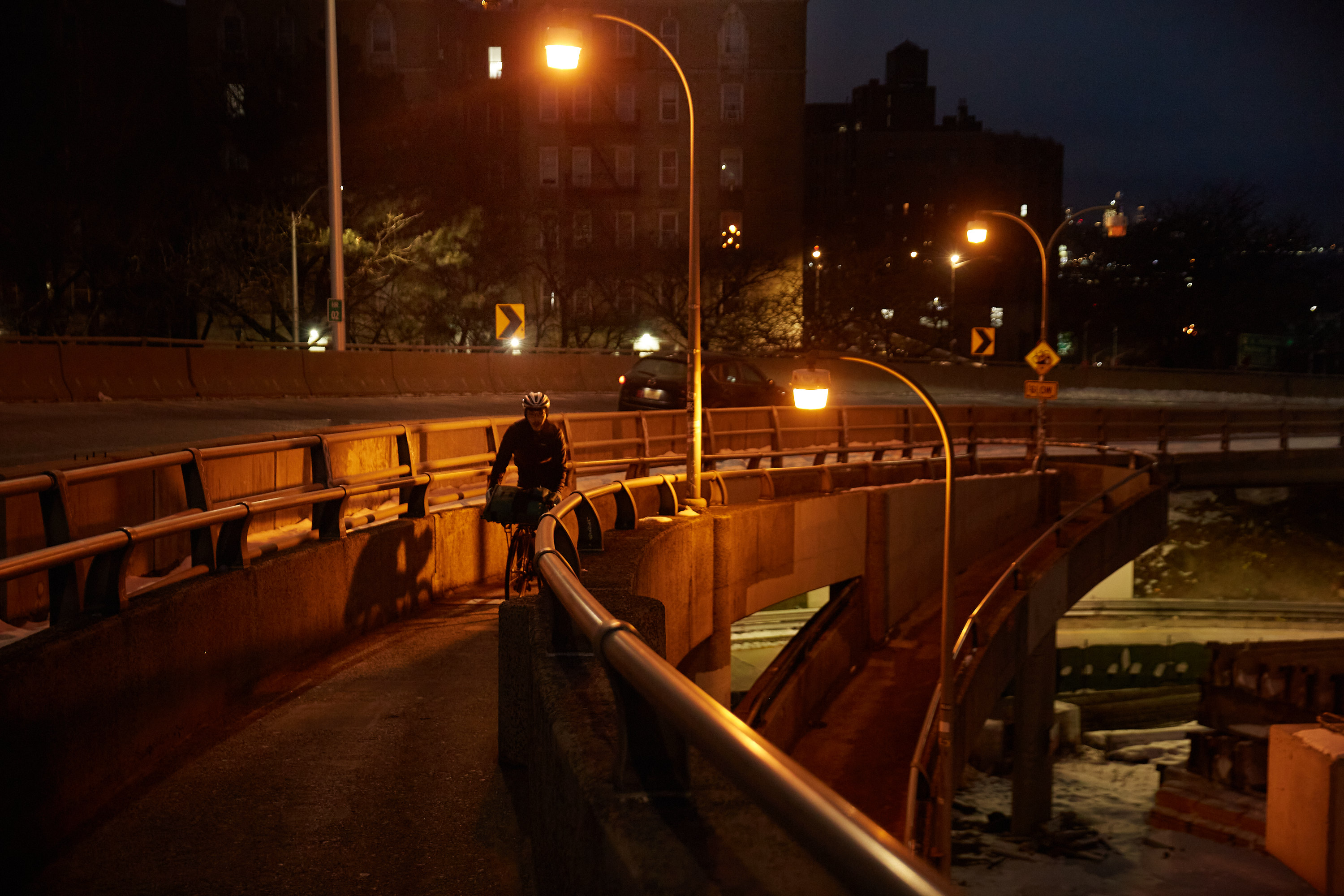
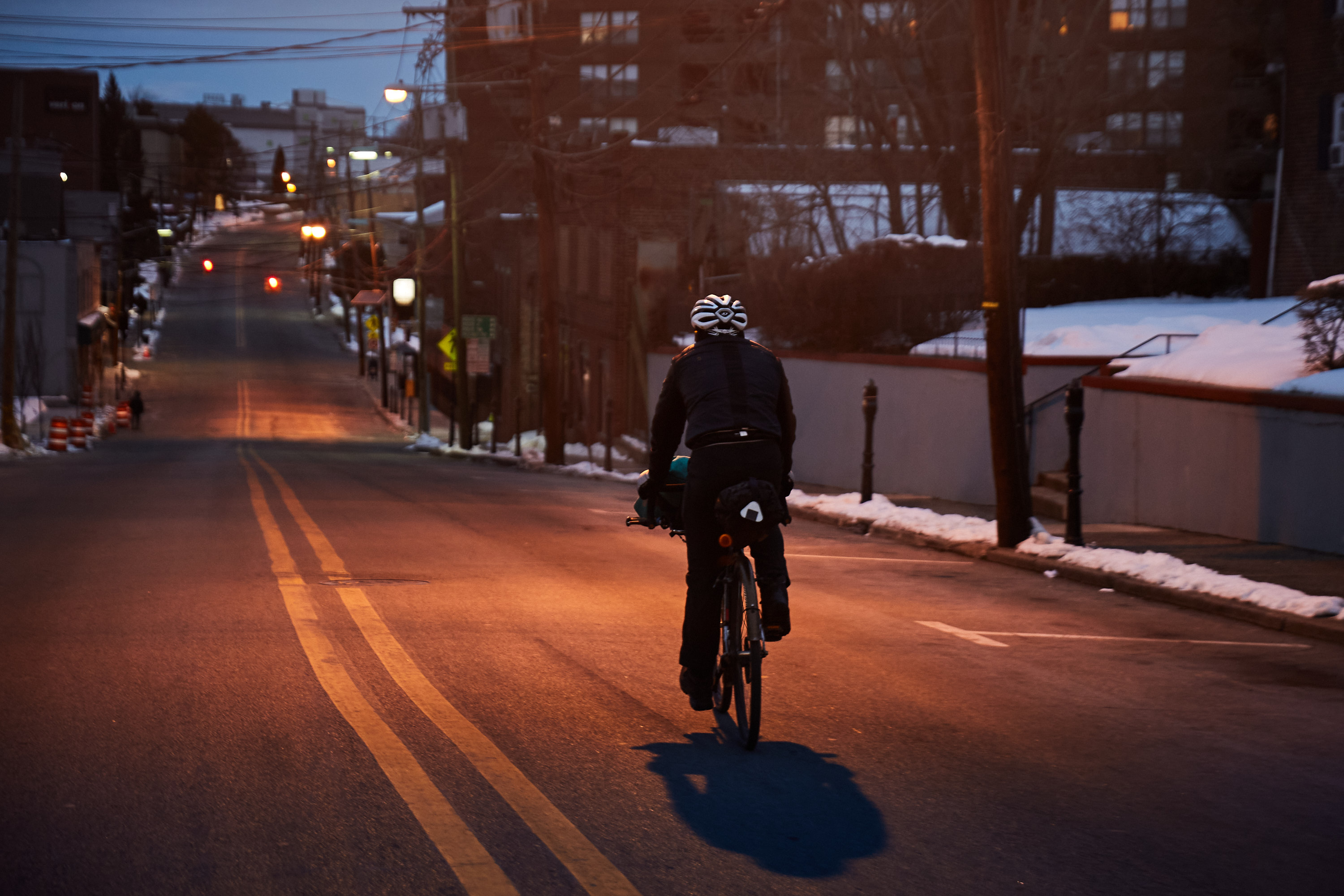
Where does the mind go in the late hours of twilight? My memories feel scrambled. My sense of self, atemporal. I begin to exist in a disembodied dream state as thoughts blend together, the ego dissolving into a patchwork of pop song refrains and visions of flying food. Ideas can sometimes be too loud or distracting for me to be able to listen to anything else. Often, all I can do to keep moving is count out my breaths in 4/4 meter and try to focus on positive affirmations.
One-two-three-four. You-can-do-this, keep-on-climb-ing.
It’s midnight now and moonless. We’re halfway through this late winter hike but comfortably on schedule. Last month’s snowshoe trail marathon around the Neversink watershed is still fresh in our minds, and we’re glad not to be breaking trail or bushwhacking this time around. This hike is the final sendoff before the vernal equinox. We’ve been moving constantly for the past 18 hours but consider this our cooldown trip. Our headlamps cut trails through the darkness.
Whenever I spend a significant amount of time riding or hiking at night, something American novelist E.L. Doctorow said in an interview always bounces around my head: “It’s like driving a car at night. You never see further than your headlights, but you can make the whole trip that way.” Granted, he was speaking on the process of writing, but that sentiment has been many times transposed as my outlook on life. It feels very applicable right now here in the woods and amid the uncertain timeline of the pandemic.
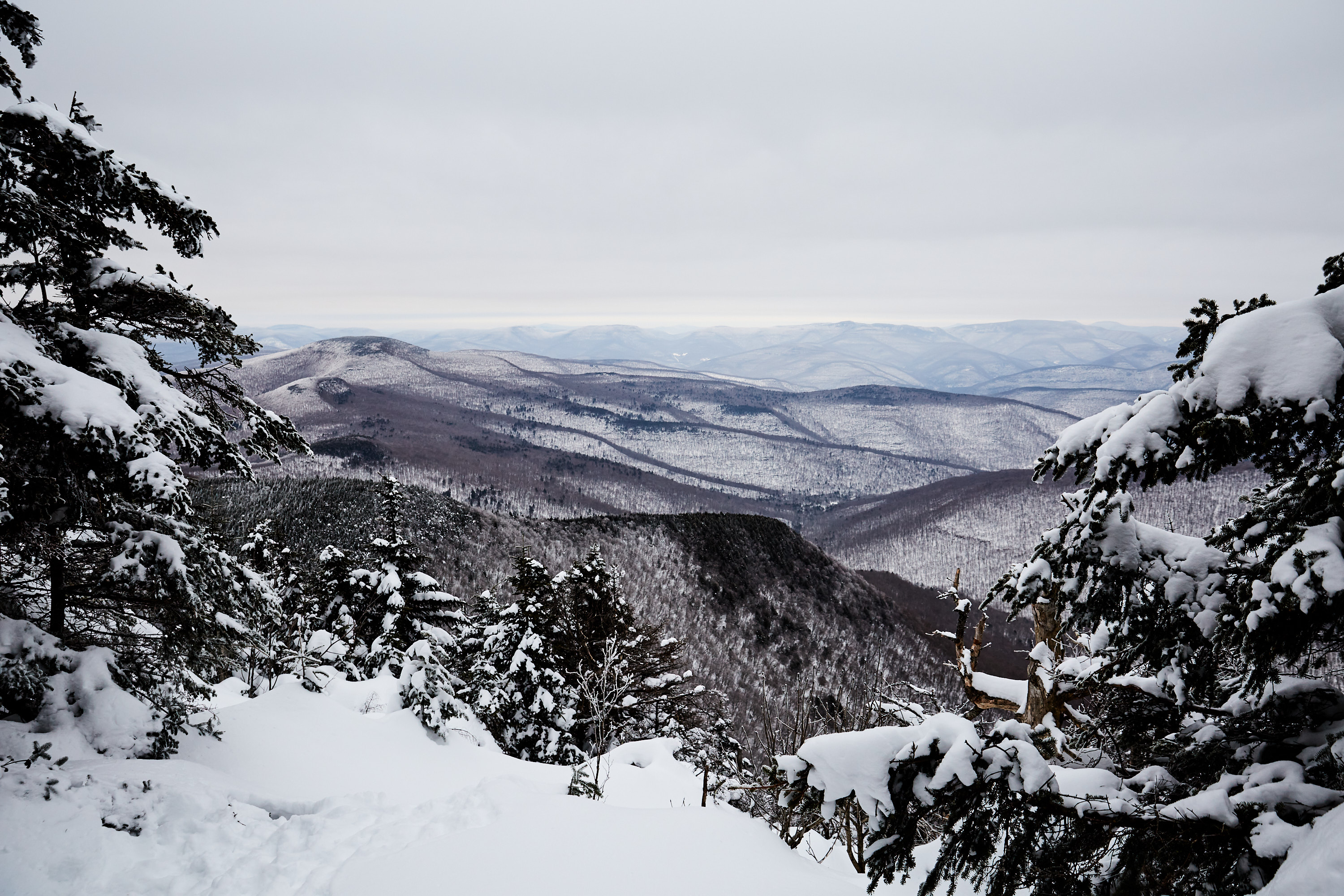



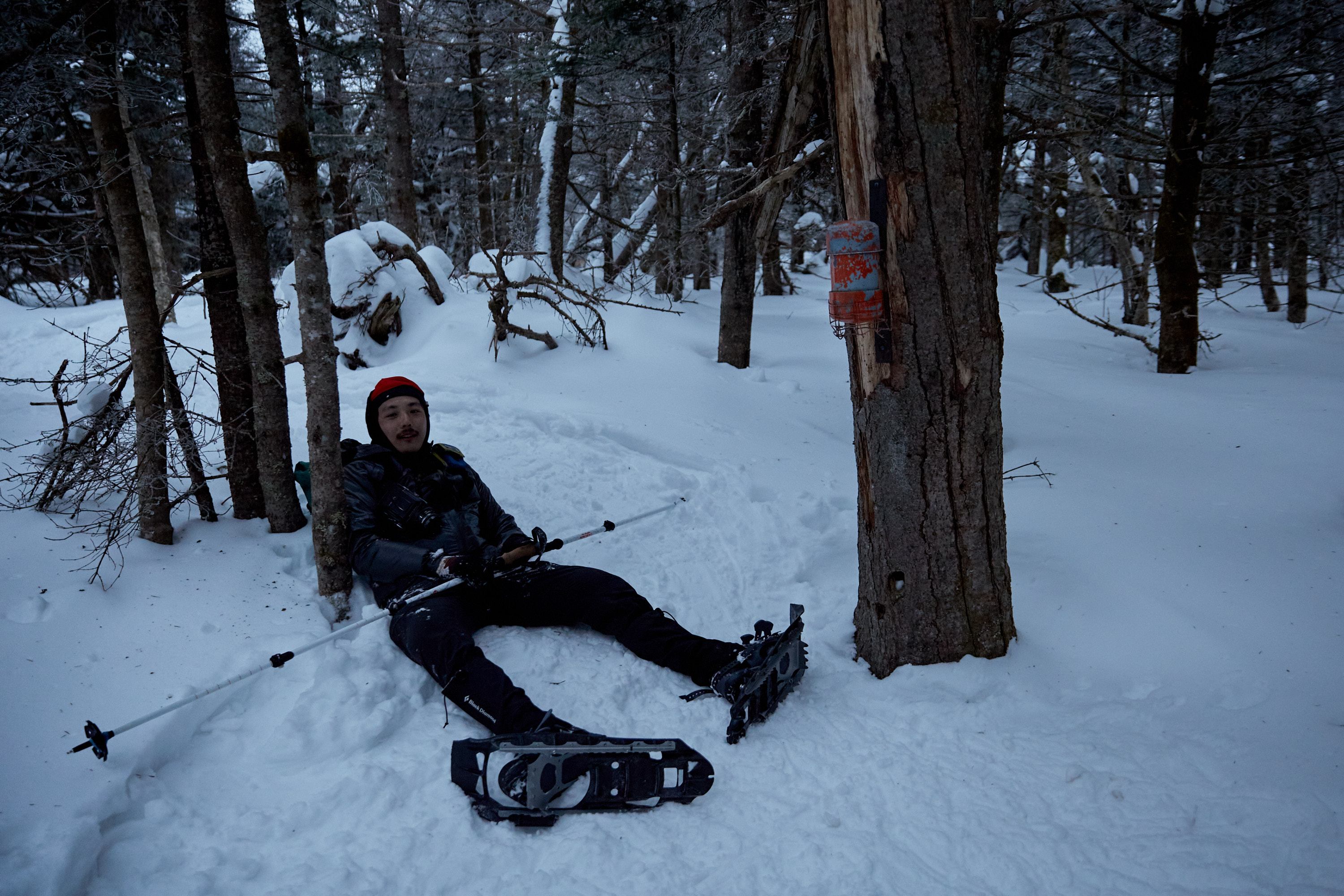
Earlier this year, I had the impulse to ride to the Catskills for a winter hike. Usually, I rely on the Metro-North train to drop me and my bike off in Poughkeepsie, a few hours’ ride from the foot of the mountains. Forever playing a game of horse with myself and incrementally adding more mileage, I’ve been wondering for years if it’s possible to cover the distance solely on my own power. Riding from my front door in Brooklyn to a trailhead in the Catskills, I’d stash the bike upon arrival, set up camp, hike up and down a few peaks, and make it back in the span of a weekend. My bicycle would essentially become my approach vehicle.
A solo roundtrip to Kaaterskill Peak was my trial run in early winter. It went smoothly, becoming the proof of concept that brought my friend Alan on board for two other trips. It took three weeks for Alan’s toes to regain sensation after our first shakedown trip together, but he was undeterred and more than eager to dive back into the meat locker temps we experienced on that first outing.
I met Alan at an NYC Adventure Cycling Club group campout a few years ago during which we rode a double century. On rides together since then, even facing most adverse conditions, his steady resolve has always kept us moving smoothly, with frequent exuberant howls punctuating long, quiet stretches. Our trips can find us comfortably silent for hours, taking turns pulling the other, sharing food, or lifting each other’s spirits with silly stories. It’s been hard to find anyone open to multimodal trips, and Alan’s become my regular adventure partner.



We pause at a series of ice shelves and perform tricky little maneuvers, calculating which roots, patches of semi-translucent ice, or bare rocks are stable enough to hold our weight. This section of the Devil’s Path contains some of the steepest sections in the Catskills. Alan hasn’t spent much time on winter hikes but is already quite comfortable using the spare ice axe I brought for him. He carefully makes sure all the teeth on his microspikes are engaged for traction on the moderate slopes. We space ourselves out, avoiding the path of potential fall lines in case either of us slips.
A few days of consecutive warm conditions coupled with a sharp drop in temperature means that much of the trail has an icy, solid crust. Starting the hike at sunset made for faster moving conditions, but the frozen postholes left by other hikers remind us that our steps still need to be taken carefully, so that we don’t break an ankle. I briefly wonder if we should have kept our cycling helmets on, until I see Alan’s beam safely at the top of the climb. I continue moving.



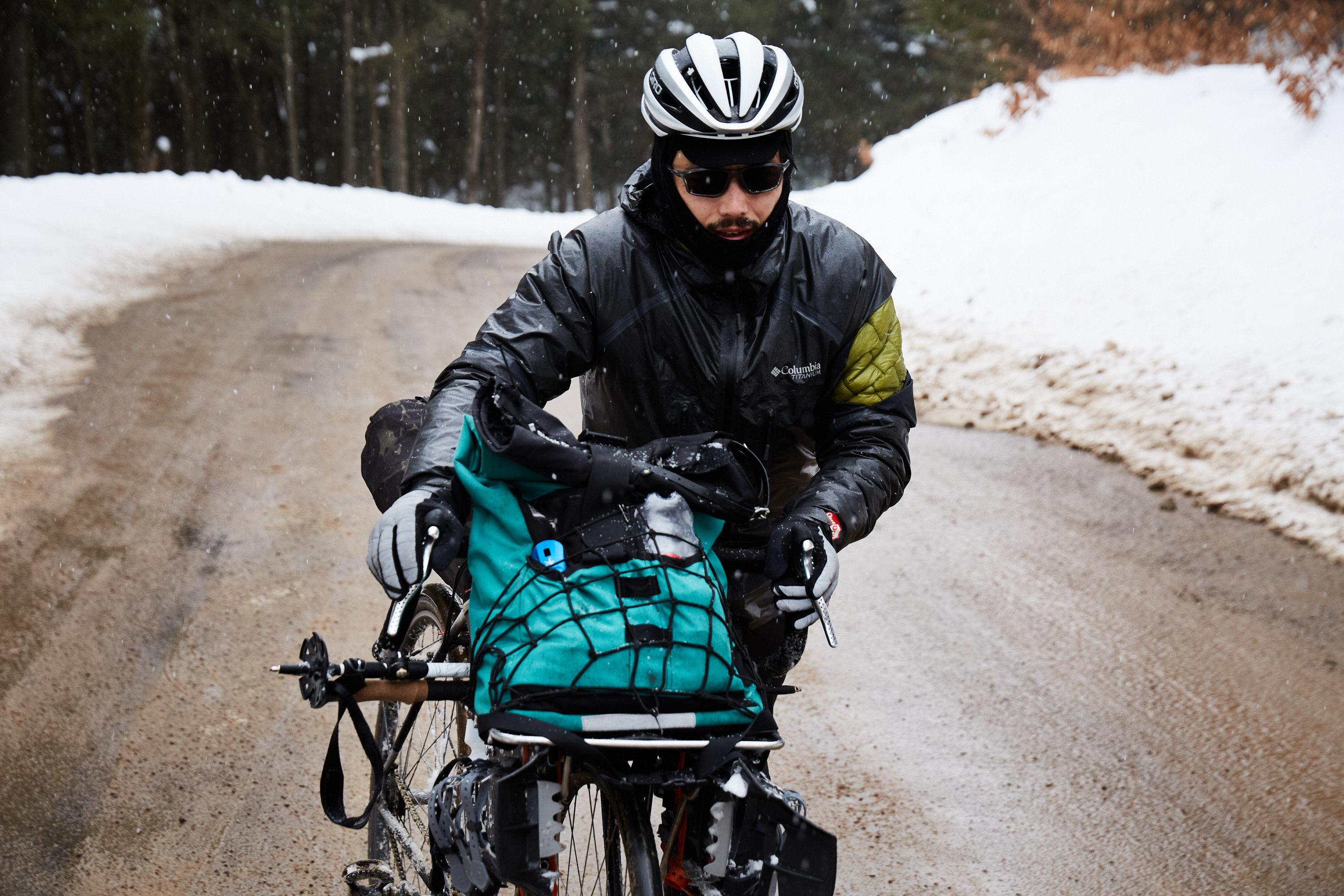



“Be careful” was likely the most common admonition my parents gave me while growing up. Refusing to yield to their warnings to stay indoors, I delighted in hopping over our backyard fence or ruining my grandpa’s garden by digging holes to create secret caverns to hide in. Climbing up onto the rooftop of our one-story house, I’d imagine I was scaling faraway mountains. Jumping off of that rooftop was my fleeting sense of flight, the scratchy green grass my soft landing pad.
Looking back, it’s a wonder I didn’t break any bones as a child. Despite all my youthful imagination, I still felt fenced in, while my parents felt they were protecting me from the world. My parents grew up with scant possessions against the backdrop of the Vietnam War, wary of others and frightened of the new world to which they eventually fled. In contrast, I was born in California and bolstered by Saturday morning cartoon superheroes, misrepresented history lessons, and the invincible action stars of the 90s. If I only let out a battle cry or dropped some witty remark, the world would reveal itself to me, reduced to an uncomplicated binary of good and evil. In my youth I felt impervious, but my parents always knew better.
“Be careful of people,” my mom still warns on our weekend phone calls, even after all these years. “Don’t forget who you are.” In many group scenarios in outdoor recreation, I’ve found myself unable to do so. I’m unable to exist in any other body. Tense in my self-awareness as an Asian-American in a sea of white faces, I sometimes feel the need to disappear or, conversely, stand out as much as possible in some form of perceived ownership. I might skip the casual, no-drop group coffee ride in favor of a spirited 24-hour push on singletrack. The activity in itself necessitates solo travel or smaller groups. The worse the weather, the better. In some ways, I’ve learned to love what many others avoid. Thankfully, I can still find a community in the fringe activity of ultra-endurance sports.





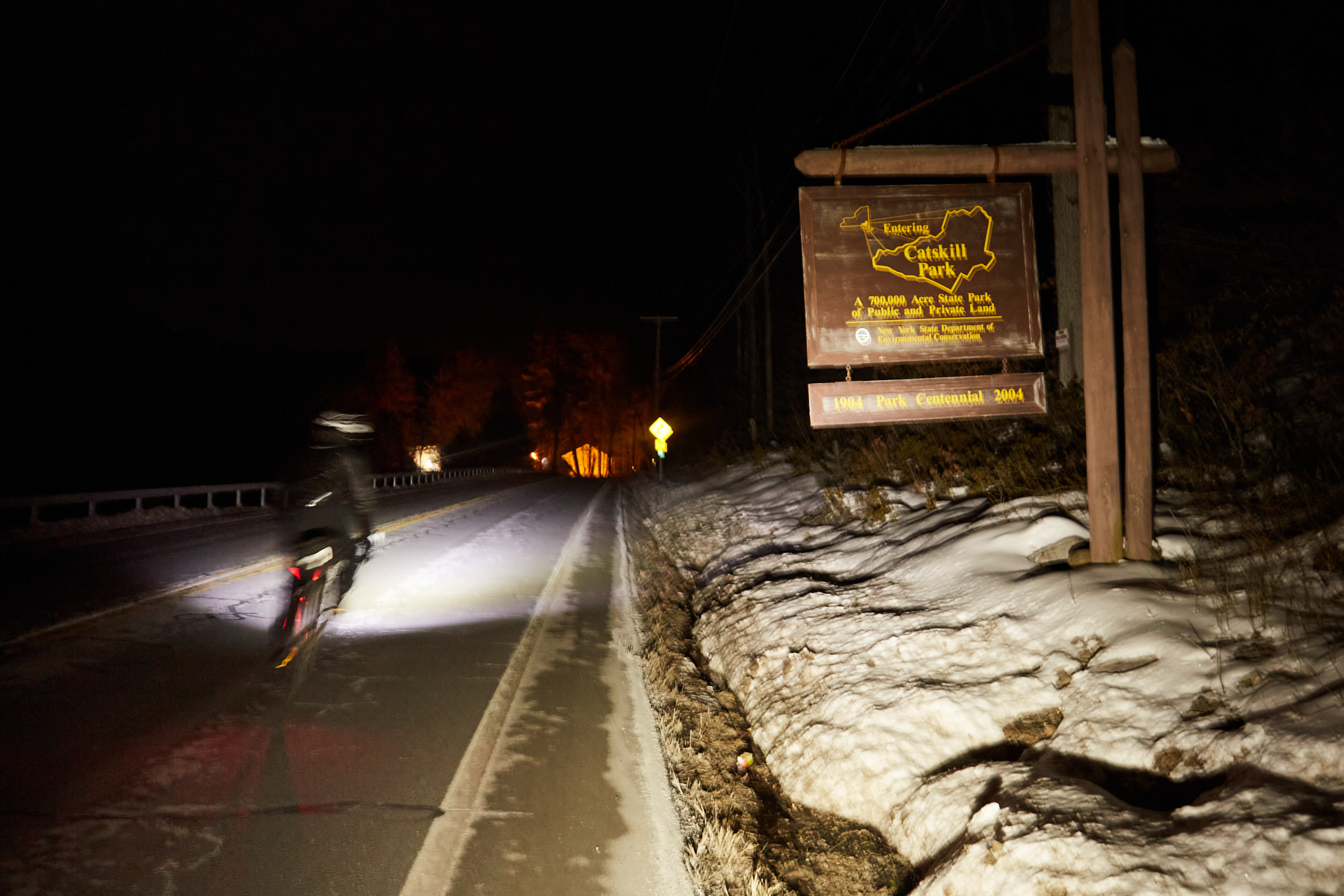
We reach a point I know we’ll return to, so we drop our packs on the side of the trail, carry some essentials, and fly unencumbered for a few miles. At this point, the path is well packed and free of postholes, and we’re able to move more efficiently over the terrain. We arrive at the canister marking the peak, and I make some joke about how the West Coast has views from the trailhead parking lot while the Northeast’s terrain can be more demanding and never deliver a single view. Thankfully, the night sky is in full celestial regalia, so we turn away from the faint light of cities in the distance and instead gaze upward. The mountain ranges framed behind us on the horizon are slumbering behemoths we’ll soon ascend again.
When I first moved to New York City a decade ago, I imagined I’d spend my early mornings and evenings wandering the streets, documenting and absorbing the daily drama of the greatest city in the world. Each person rushing on the street felt like a story yet to unfold, our trajectories ready to shift should we collide. Career ambitions eventually take shape, though, and friction gets reduced—I could only stay in a state of wonder for so long.
My focus quickly shifted into deadlines, constant meetings, and whiling away hours on my computer. Needing a reset, a long bike tour in a new country would be the treat to sign off the year. While I acknowledge my privilege in being able to leave the city, I long to shirk its creature comforts and become reduced to my basic needs, all in the expectation that clarity will arrive at the bottom of a titanium mug of morning coffee. In all too familiar myopia, I lost sight of the forest for the trees. The density of the city, which initially drew me in, became what I sought to escape.




Recently, long rides have taken on a different note. COVID-19 notwithstanding, with America’s latest reckoning with racial justice, the neverending climate crises, and hate crimes on the rise, it’s been a complex past year. Processing the news has felt like an exercise of learned helplessness, shouting into the void, and numbly taking it all in. I sometimes feel like a pufferfish slowly inflating until all anyone can see are my barbs shielding myself from the world.
In the microcosm of a weekend trip, though, these anxious thoughts can quiet down. After experiencing so much paralysis, all I want to do now is keep moving. These trips are a reminder to pace myself, eat more, and look further up the road or trail. The hike, the ride, the paths I take, the places I choose to sleep—these are things in my control. I’m dressed for the occasion, my first aid kit is in my pack, my satellite communication device pings my location every 30 minutes, and I have food, water, and shelter. I can handle tired quads or cold digits, a much less complex problem to confront than systemic racism or a global pandemic. Patience still feels hard sometimes, but nothing substantive happens overnight.
There’s a certain beauty in finding transcendence in one’s backyard, whether it’s running laps around a city block in Queens or a weekend ride from my front door to a trailhead for a hike. In an ideal scenario, I would’ve had this revelation in better circumstances when the world didn’t feel like it was falling apart. The cautious, early rides through the city took on new colors as I spent more time locally, buoyed by the vividness of a passing stranger’s laugh or the snippets of conversation floating through the air. My “dirt church” could be found right outside my front door, doing laps at the local mountain bike park. My freeze-dried backpacker meal could instead be a heavenly slice from a neighborhood pizzeria. After a heavy snowstorm, I can find delight in breaking trail to the cafe around the corner or cross-country skiing down streets that have yet to be plowed. The hike-a-bike section of my day might just be the return trip from the grocery store, lifting my bike and its contents up my building’s many flights of stairs.
I watch the trees above me sway as another gust rushes through the valley, the creaking mass of plant bodies talking to each other, a game of telephone as they relay their message, high pressure to low. I focus on a long, controlled, deep exhale, clearing my lungs and relaxing my body. The resultant warmth reaches my fingers and toes. It’s been windy all weekend, but, for all the white noise the weather surrounds us with, all feels calm within us. When there’s so much noise, it can feel like there’s none at all. We pick our way over downed branches and trees, the steady rhythmic thud of microspikes on fast-frozen snowpack. Camp begins to feel close, and, along with it, the gradual light of a new day begins to brighten up the sky.







One-two-three-four.
For activities that require a significant investment of time, memory is a curious thing. In the middle of a journey, I can feel swept up by the inertia. In stubbornness, I might hold on to whatever emotional state I felt when I started at the trailhead, and with the mind’s ability to compress time and space, the trip may be reduced to this single sensation I’ve chosen to hang on to.
We all have a story to tell, but in what voice do we tell it? Sometimes, the bulk of a trip happens at night, and markers of progress can feel too spaced apart. A headlamp’s beam can only travel so far. I need reminders, records of where I’ve come from, and what I’ve been able to do. It’s at this point that I need to be my own cheerleader. I might not always have an Alan encouraging me to keep going. When there’s light again, I always make sure to take plenty of photographs in an attempt to document my trip while being present at the same time. Sometimes, the grand revelation is just learning how to be comfortable with myself. That’s how I’ll be able to handle whatever life throws at me next.




Type 2 miles and misadventures
© 2020 Conan Thai Photography